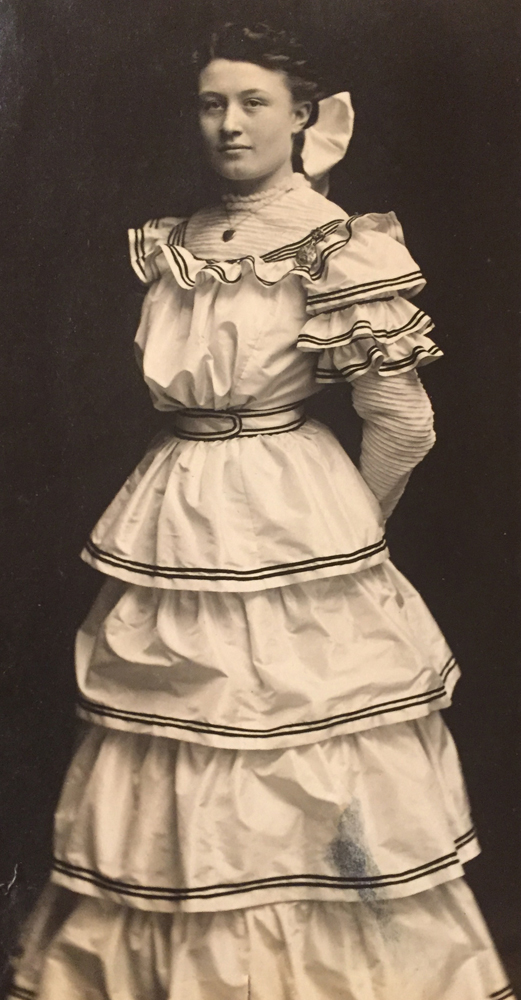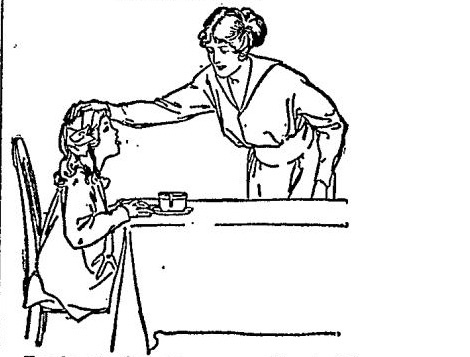Looking back at the 1918 Spanish Flu epidemic in Hilton-Parma

by Amanda Dudley
The COVID-19 pandemic has changed our lives significantly in a short period of time. It seems like the term “social distancing” became common in our vocabulary overnight. Items like hand sanitizer, cleaning supplies, and toilet paper were flying off the store shelves. Face masks went from being recommended to being required almost everywhere. Businesses and schools closed and just recently started reopening with social distancing precautions. We have experienced nothing like this in our lifetimes. As strange as this time may seem, it is not the first time residents of Hilton have had these experiences.
According to the CDC, the 1918 H1N1 flu virus caused the deadliest pandemic of the 20th century. Although there is a debate on the origin of the virus, in the United States, it was first identified in military personnel in spring 1918. By the fall of 1918, the virus had spread around the world and became known in the U.S. as the “Spanish Flu.”
Our little village of Hilton and town of Parma were not spared from the virus. Beginning in the fall of 1918, the Hilton Record newspaper was commonly reporting on the effects of the virus. The first report of closures was on October 17, 1918, when village and town churches and schools were closed on account of the call to quarantine. By the following week, the library and billiard halls were closed. Local health officers forbid the sale of ice cream by the dish and soft drinks by the glass. The virus was spreading rapidly, and drastic measures were taken to prevent its spread.
However, the closures did not last long. On November 4, schools and churches were reopened. Health officers determined it was safe to resume activities, as no new cases had been reported locally within the ten previous days. However, this was short-lived, and by late November, there were more cases of influenza in Hilton than there had been at the time of the first closures in October. Churches and schools were closed again, and all public gatherings were banned. Throughout the winter of 1918 to the spring of 1919, churches and schools in Hilton closed and reopened every few weeks due to the increase or decrease in influenza cases. It was surely a tumultuous time.
Health officials released instructions and advice on how to prevent the spread of the “Spanish Flu.” Perhaps surprising is the fact that the advice given to prevent the spread of illness in 1918 is similar to our recommendations on COVID-19 today. According to the Hilton Record article published on October 31, 1918, advice given was to:
•Keep away from gatherings and crowds.
•Keep away from poorly ventilated and crowded places.
•Keep away from cities and villages where influenza prevails.
•Don’t visit houses where there is sickness.
•Keep your house thoroughly ventilated.
•Keep your hands clean, and keep your fingers out of the nose and mouth.
•Cover your face with a handkerchief if you cough or sneeze.
•Don’t spit anywhere.
•If you feel sick at all, go to bed at once and call your physician.
With the continued spread of the flu, volunteers were desperately needed to assist with caring for the ill. Rose Ducolon, Chairman of the Hilton Branch of the American Red Cross, published an article in the Hilton Record on December 5, 1918, calling for volunteers to help care for the ill, clean, and prepare food. She pleaded that there were families in the community where every member of the household was ill, and they had no one to care for them. Addressing risk, Rose stated, “The risk we incur by caring for influenza patients is not half so serious as the risk we are taking every day by letting our friends suffer for lack of care.” She further stated as a Christian community and representatives of the American Red Cross, it was the duty of Hilton residents to help the community.
Despite the struggles of illness and death caused by the flu, Hilton residents still found ways to stay positive and uplift their spirits. One way was through humor and music. A comedic song was published in the Hilton Record on November 28, 1918:
It’s the Flu
When your head is blazing, burning
And your brain within is turning
Into buttermilk from churning
It’s the flu.
When your joints are creaking
As if all the fiends were reaching
All the devils were attacking
It’s the flu.
Chorus
It’s the Flu, Flu, Flu!
Which has you, you, you
It has caught you and it’s got you
And it sticks like glue
It’s the very latest fashion
It’s the doctor’s pet and passion
So sneeze a bit,
And wheeze a bit,
Ka-chew, chew, chew!
Although our present time seems scary, strange, and stressful, it’s important to remember that this is not the first time residents in our area have dealt with, and overcome, a pandemic. As we can see, they followed similar precautions, cared for their neighbors, and even found room for humor in a difficult time. Looking to the past can give us hope that we, too, will overcome.
It’s important that we have this history available to us, and why we should document our experience of the COVID-19 pandemic for future generations. Local historians are asking residents to send their observations, experiences, and reactions for the historical record. In Hilton-Parma, the Historian’s office is welcoming residents’ stories in any format. Residents are asked to share whatever they think might be important, interesting, or helpful to people in the future, as to what they have experienced and how they have coped during this challenging time. Those inclined to send in their stories may direct them to the Village of Hilton Historian’s Office, 59 Henry Street, Hilton, NY 14468, or email historian@hiltonny.org.
Note from David Crumb,
Parma Hilton Historian:
The 1918 Spanish Flu Epidemic infected about one third of the world’s population of 1.7 billion people. Internet sources note that it is estimated that 50 million people died worldwide. In the United States it is noted that 675,000 people succumbed to the virus. The population of the United States in 1918 was estimated to be 103 million. Today’s world population is estimated to be 7.8 billion people and the United States is 350 million. The flu in 1918 lasted about 15 months, finally ending in 1920. On top of that, with only the newspapers for communication there was not a lot of thorough documentation as we have today. In Hilton there were some deaths noted in the Hilton Record, but people did not talk a lot about the epidemic. There was no Facebook, no Twitter. People tended not to talk about tragedies and pretty much suffered through them. Of the three people whom I knew who had the Spanish Flu and recovered, all lived into their nineties and one to 100. Could it be that the illness strengthened their immune-system?



